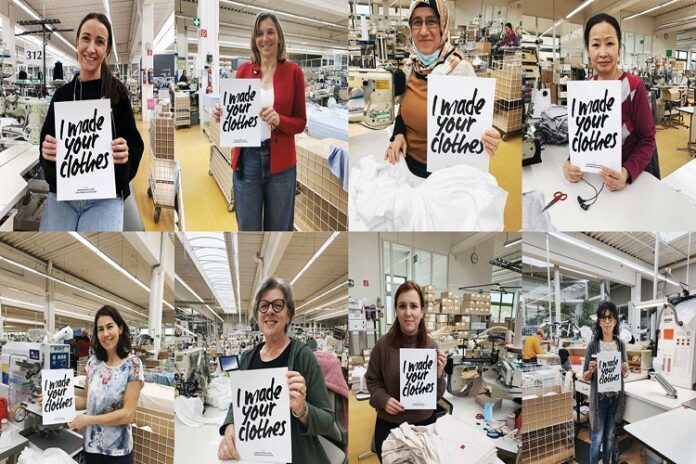Introduction
Fashion is an ever-evolving industry that constantly shapes the way we express ourselves and interact with the world. However, in recent years, the fashion industry has faced increasing scrutiny for its social and environmental impact. This has given rise to a movement known as the Fashion Revolution, which aims to promote transparency, sustainability, and ethical practices within the fashion industry. In this article, we will delve into the latest information on the Fashion Revolution and explore its key principles and initiatives. Learn the backstories of your favorite clothes by clicking at novelstyleblog.com and join a growing movement that is reshaping the fashion business by exploring “The Fashion Revolution.”
The Origins of the Fashion Revolution
As a direct result of the catastrophic event that took place at Rana Plaza in Bangladesh on April 24, 2013, the Fashion Revolution came into being. The collapse of the Rana Plaza building, which contained many garment companies, resulted in the deaths of over 1,100 people and injured thousands more. The structure was located in Rana, Bangladesh. This terrible occurrence brought to light the unsafe working conditions and lack of laws on safety that exist throughout the global fashion supply chain.
Key Principles of the Fashion Revolution
The Fashion Revolution is built upon four key principles:
- Transparency: The movement advocates for increased transparency throughout the fashion supply chain, from raw materials sourcing to manufacturing and distribution. By knowing where and how our clothes are made, consumers can make informed choices and hold brands accountable.
- Sustainability: The Fashion Revolution promotes sustainable practices that minimize the industry’s negative impact on the environment. This includes reducing carbon emissions, minimizing water consumption, and embracing circular economy models that prioritize recycling and upcycling.
- Ethics: Ensuring fair and ethical treatment of workers is a fundamental principle of the Fashion Revolution. The movement supports fair wages, safe working conditions, and the eradication of forced labor and child labor in the fashion industry.
- Consumer Activism: The Fashion Revolution encourages consumers to become active participants in driving change within the industry. By asking “Who made my clothes?” and demanding transparency from brands, consumers can amplify their voices and push for a more sustainable and ethical fashion system.
Fashion Revolution Week
Every year, the Fashion Revolution organizes Fashion Revolution Week, a global campaign that takes place in April around the anniversary of the Rana Plaza disaster. During this week, individuals, brands, and organizations come together to raise awareness and advocate for a more sustainable and ethical fashion industry.
Fashion Revolution Week encourages consumers to engage in various activities, such as wearing their clothes inside out to show the labels, asking brands about their supply chain practices on social media using the hashtag #WhoMadeMyClothes, and hosting events and discussions to promote dialogue and education.
Initiatives and Progress
The Fashion Revolution has made significant strides in driving change within the fashion industry. Some notable initiatives include:
- Fashion Revolution’s Fashion Open Studio: This initiative connects consumers with designers and artisans, providing a behind-the-scenes look into the creative process and showcasing sustainable and ethical practices.
- Fashion Revolution’s Fashion Revolution Index: This annual publication ranks major fashion brands based on their transparency and sustainability practices, pushing for greater accountability within the industry.
- Global Fashion Agenda: The Fashion Revolution collaborates with the Global Fashion Agenda, a leadership forum for sustainable fashion, to accelerate the industry’s transition towards a more circular and responsible business model.
The Role of Technology
Technology plays a vital role in advancing the Fashion Revolution. Digital platforms and tools enable greater transparency and traceability within the supply chain, allowing brands to share information about their sourcing and manufacturing processes. Blockchain technology, for instance, can provide immutable records of transactions, ensuring the authenticity and transparency of products.
Additionally, emerging technologies like 3D printing and virtual reality are revolutionizing the design and production processes, offering sustainable alternatives and reducing waste.
Conclusion
The Fashion Revolution is an essential movement that seeks to transform the fashion industry into a more transparent, sustainable, and ethical ecosystem. By promoting transparency, sustainability, and ethical practices, the Fashion Revolution aims to create a fashion industry that values people and the planet. Discover how your wardrobe decisions affect the world, and learn how to make more sustainable buys. Visit polish-clothes.com for more information.
Through initiatives like Fashion Revolution Week and collaborations with organizations like the Global Fashion Agenda, the movement has made significant progress in driving change and raising awareness. The role of technology in enabling transparency and innovation within the industry cannot be overlooked.
As consumers, we have the power to contribute to the Fashion Revolution by making conscious choices, demanding transparency from brands, and supporting sustainable and ethical fashion practices. Realize your power as a consumer and learn here korsdiscount.net how your choices can shape a more ethical, inclusive, and sustainable fashion industry. Together, we can create a fashion industry that is not only stylish but also responsible and accountable for its social and environmental impact.









